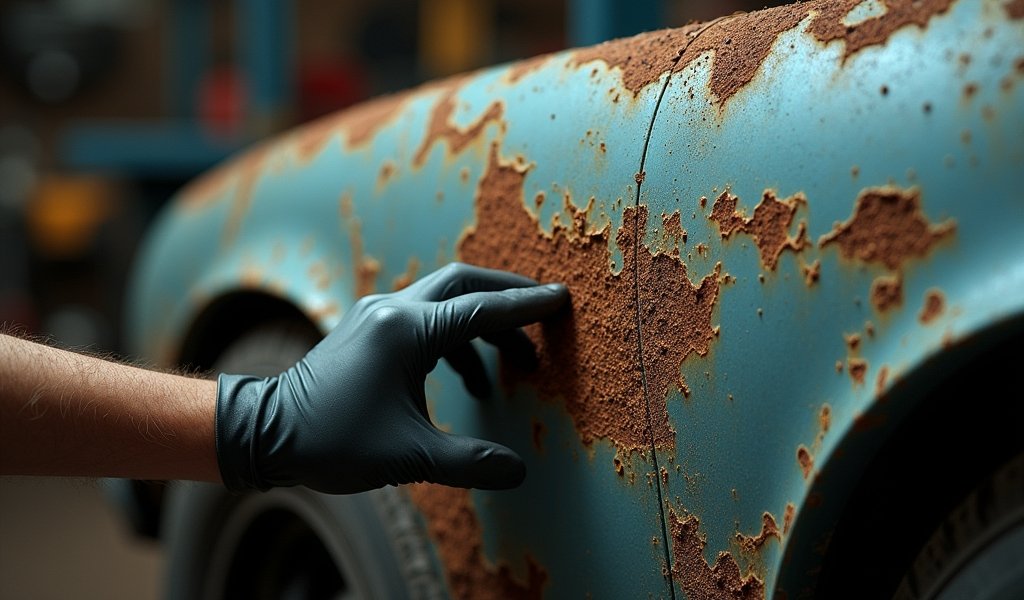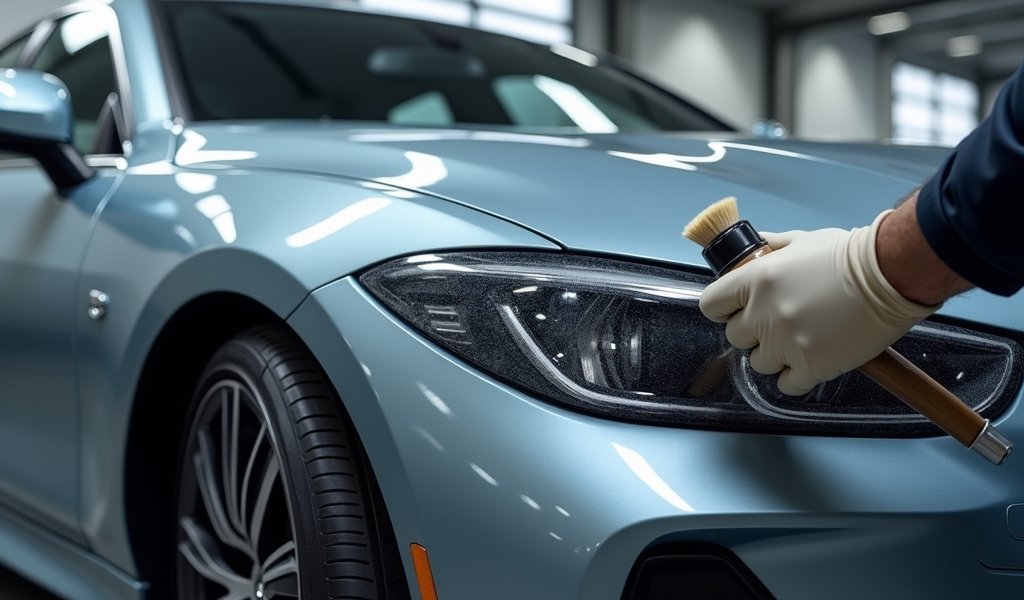Overview
This article presents seven proven strategies to prevent car rust, including regular washing, protective waxing, undercoating, managing road salt exposure, proper storage, regular inspections with early intervention, and professional rust-proofing treatments. The author emphasizes that consistent preventive maintenance is far more effective and economical than treating rust after it appears, potentially saving vehicle owners thousands in repair costs while extending their car’s lifespan and preserving its value.
Table of Contents
- Understanding Car Rust: The Silent Destroyer
- Why Prevention Matters More Than Treatment
- 1. Regular Washing: Your First Line of Defense
- 2. Protective Waxing and Sealants
- 3. Undercoating: Armor for Your Vehicle’s Underbody
- 4. Managing Road Salt Exposure
- 5. Proper Storage and Garage Keeping
- 6. Regular Inspections and Early Intervention
- 7. Professional Rust-Proofing Products and Services
- Conclusion: Protecting Your Investment
- Frequently Asked Questions
Understanding Car Rust: The Silent Destroyer
Let’s talk shop about one of a vehicle’s most persistent enemies – rust. As someone who’s spent decades under the hood, I can tell you that effective car rust prevention tips aren’t just nice-to-haves; they’re essential for extending your vehicle’s lifespan. Rust is essentially vehicle cancer – it starts small, often in places you can’t see, and spreads relentlessly if left unchecked.
In my 25 years working with cars, I’ve seen perfectly good vehicles sent to the scrapyard because rust had compromised structural integrity. The real kicker? Most of this damage could have been prevented with some regular maintenance and a few preventive measures.
Rust forms when iron in your car’s metal components reacts with oxygen and moisture to form iron oxide. This chemical reaction accelerates with exposure to salt, dirt, and environmental pollutants. The process might start with just a tiny paint chip, but before you know it, you’re looking at bubbling paint, flaking metal, and eventually, structural weakness that can affect safety.
Why Prevention Matters More Than Treatment
Here’s the hard truth: once rust takes hold, you’re fighting an uphill battle. It’s like dental care – prevention is infinitely easier and cheaper than treatment. The good news? With regular attention and these proven car rust prevention tips, you can keep your vehicle looking sharp and structurally sound for years to come.
According to a study by the National Association of Corrosion Engineers, corrosion costs the U.S. auto industry approximately $23.4 billion annually. That’s billion with a B, folks. And guess who ultimately pays that cost? That’s right – it trickles down to us, the vehicle owners.
The good news is you don’t need to be a certified mechanic to implement effective rust prevention strategies. With a bit of knowledge and regular effort, you can significantly extend your vehicle’s life and preserve its value. Let’s dive into the seven proven fixes that will keep the rust monster at bay.

1. Regular Washing: Your First Line of Defense
I can’t stress this enough: regular washing is your vehicle’s first and most crucial defense against rust. It’s not just about keeping your ride looking pretty (though that’s a nice bonus). It’s about removing the contaminants that trigger and accelerate the corrosion process.
During winter months or if you live in coastal areas, you should wash your vehicle at least every two weeks. Pay special attention to the undercarriage – that’s where salt, mud, and road grime accumulate and do the most damage. Many car washes offer undercarriage spray options; it’s worth the extra few bucks.
Here’s a pro tip from the garage: try to wash your car around midday when temperatures are highest, especially in winter. This allows adequate drying time before evening temperature drops that could freeze residual water in crevices. After washing, take a short drive with the heater on to help dry those hard-to-reach areas.
Don’t forget about those often-neglected areas: door jambs, drain holes in doors and rocker panels, and the areas around trim and moldings. These spots are rust magnets because they trap moisture and debris. A microfiber towel and some elbow grease go a long way here.
2. Protective Waxing and Sealants
Think of car wax and sealants as sunscreen for your vehicle. They create a protective barrier between your paint and the elements. I recommend waxing your vehicle at least every three months, though seasonal changes are good reminders – think “Spring, Summer, Fall, Protect, That’s All.”
Modern synthetic waxes and ceramic coatings offer superior protection compared to traditional carnauba waxes, though they’re a bit more expensive. If you’re on a budget, even a basic wax application is infinitely better than leaving your paint unprotected. Remember, your paint isn’t just for looks – it’s your car body’s primary defense against oxygen and moisture.
When applying wax, don’t rush the process. Work in small sections, and pay extra attention to areas prone to water accumulation like the lower edges of doors, fenders, and around trim pieces. These are often the first places where rust makes its unwelcome appearance.
For maximum protection, consider layering your defenses. A polish to remove contaminants, followed by a sealant for long-term protection, topped with a wax for that deep shine and additional water repellency. It might sound like overkill, but when you’re still turning heads with your rust-free ride a decade later, you’ll thank me.
3. Undercoating: Armor for Your Vehicle’s Underbody
Your vehicle’s undercarriage takes the worst beating from road debris, water, and salt. Undercoating provides a critical layer of protection for these vulnerable areas. There are several types of undercoating available, from rubberized coatings to oil-based solutions, each with its own advantages.
I typically recommend a professional application for the best results, but there are DIY options available at most auto parts stores. If you go the DIY route, preparation is crucial. The undercarriage must be thoroughly cleaned and completely dry before application. Any existing rust should be properly treated first – applying undercoating over active rust is like putting a bandage over an infection.
When choosing an undercoating product, consider your specific needs. Oil-based coatings penetrate better and can displace moisture, making them excellent for rust prevention. Rubberized coatings provide better sound dampening and impact protection. For maximum protection, some of my customers opt for a combination approach: an oil-based product for rust-prone areas and a rubberized coating for high-impact zones.
Remember that undercoating isn’t a one-and-done solution. Inspect it annually and reapply as needed, particularly before winter if you live in a region where road salt is used. This preventive maintenance might take a weekend of your time, but it can add years to your vehicle’s structural integrity.
4. Managing Road Salt Exposure
Road salt is rust’s best friend and your car’s worst enemy. If you live in a region where road salt is used, you need to be especially vigilant about preparing your car for road salt season. The sodium chloride and other chemicals used for de-icing roads are highly corrosive to metal components.
During winter months, try to wash your vehicle at least weekly – more frequently if possible. Choose car washes that offer underbody spray options to flush out salt from hard-to-reach areas. If temperatures permit, doing this on warmer winter days (above freezing) can help ensure more thorough drying.
Here’s a trick I’ve used for years: before the first snowfall, apply a heavy coat of wax to your vehicle, paying extra attention to the lower body panels. This creates an additional barrier against salt spray. Some drivers even apply petroleum jelly to door jambs and other exposed metal parts as an extra layer of protection.
If possible, avoid driving immediately after roads have been salted, and try to steer clear of large puddles where salt concentrates. When you must drive in these conditions, a thorough rinse-off as soon as possible afterward can minimize damage. Just remember – salt’s corrosive effects continue as long as it remains on your vehicle, so prompt removal is key.

5. Proper Storage and Garage Keeping
Whenever possible, store your vehicle in a garage or under cover. This simple step shields your car from precipitation, UV damage, and temperature fluctuations – all factors that can accelerate rust formation. If a garage isn’t available, consider investing in a quality waterproof car cover for winter protection.
Contrary to what some folks think, parking in a heated garage during winter can actually help prevent rust. When a cold car enters a warm garage, any snow or ice melts and can evaporate rather than staying frozen against metal components. Just make sure your garage has adequate ventilation to prevent excessive humidity from building up.
If you’re storing a vehicle long-term, take additional precautions. Place a dehumidifier near the vehicle if your storage area tends to be damp. Consider using desiccant packets in the interior to absorb moisture. For vintage or collector cars, some enthusiasts even use moisture-absorbing products specifically designed for vehicle storage.
Don’t forget that moisture can come from below as well. If your garage has a concrete floor, moisture can wick up from the ground. A simple solution is to place a vapor barrier (like a heavy plastic tarp) under your vehicle. This prevents ground moisture from creating a humid microclimate around your car’s undercarriage.
6. Regular Inspections and Early Intervention
In my decades working on cars, I’ve learned that rust doesn’t take holidays. Regular inspections are crucial for catching corrosion in its earliest stages when it’s easiest to address. Make it a habit to check your vehicle thoroughly at least once a season, paying special attention to problem areas.
Common rust hotspots include wheel wells, the edges of the hood and trunk, the bottom edges of doors, around windshield and rear window seals, and anywhere paint has chipped or scratched. Use a flashlight to inspect dark areas and don’t be shy about getting on your back to check the undercarriage – that’s where the most serious rust often starts.
When you spot the beginning signs of rust – usually appearing as small bubbles under the paint or reddish-brown spots on exposed metal – act immediately. Small rust spots can often be treated with sandpaper, rust converter, primer, and touch-up paint. According to Consumer Reports’ automotive experts, addressing rust early can prevent it from spreading and save hundreds or even thousands in repair costs.
Don’t forget to inspect less obvious areas like the spare tire well in your trunk, battery tray, and areas around the windshield washer reservoir. These spots often collect moisture and debris but aren’t routinely cleaned, making them perfect breeding grounds for corrosion. A quick check now can save major headaches later.
7. Professional Rust-Proofing Products and Services
For those seeking maximum protection, professional rust-proofing services offer specialized treatments designed to protect your vehicle comprehensively. These services typically cost between $100-500 depending on the type of treatment and your vehicle size, but they can be a worthwhile investment, especially for newer vehicles you plan to keep long-term.
There are several types of professional rust-proofing methods, each with different approaches:
- Electronic rust protection systems that claim to disrupt the electrochemical process that causes rust
- Dripless oil spray treatments that coat internal body panels and crevices
- Drip oil treatments that continue to spread and self-heal after application
- Tar-based or rubberized undercoatings that provide physical barriers
In my professional experience, annual oil-spray treatments tend to offer the best combination of protection and value for most vehicles. The oil penetrates seams and crevices where moisture hides, and its ongoing flowing nature helps it self-heal and continue protecting even if the coating gets scratched.
If you opt for professional services, timing matters. The best time for annual rust-proofing is late summer or early fall, before the winter weather hits. Make sure the provider has a good reputation and ask them to explain exactly what areas they’ll be treating and what products they use.
Remember that even with professional treatments, your own maintenance habits remain important. Think of professional rust-proofing as an additional layer of defense in your overall protection strategy, not a replacement for good car care practices.
Conclusion: Protecting Your Investment
Implementing these car rust prevention tips isn’t just about aesthetics – it’s about preserving your vehicle’s structural integrity, safety, and value. Whether you’re maintaining a daily driver or protecting a cherished classic, these seven proven approaches will significantly extend your vehicle’s life.
The key to successful rust prevention is consistency. A single wash or wax application won’t do much in the long run. It’s the regular, persistent care that makes the difference between a vehicle that succumbs to rust in a few years and one that remains solid and reliable for decades.
Remember that every climate presents different challenges. Those in coastal or snowy regions need to be especially vigilant, but even in drier climates, morning dew and occasional rain provide enough moisture to initiate corrosion. Tailor your prevention strategy to your specific conditions.
Your vehicle represents one of your largest investments. A little preventive maintenance now saves substantial repair costs down the road, preserves resale value, and keeps your ride looking great and running safely. In my years turning wrenches, I’ve seen firsthand how these simple practices separate cars that age gracefully from those that deteriorate prematurely.
Start implementing these strategies today, and you’ll thank yourself years from now when your vehicle still looks great and remains structurally sound while others its age have long since rusted away.
Frequently Asked Questions
How often should I wash my car to prevent rust?
In normal conditions, wash your car every two weeks, increasing to weekly during winter or if you live in coastal areas. Always include underbody washing when road salt is present.
Can I apply rust prevention products myself or should I hire a professional?
Many rust prevention products are suitable for DIY application, including waxes, sealants, and some undercoatings. Professional services are recommended for comprehensive undercarriage treatments and cavity protection.
What’s the most effective type of rust-proofing for vehicles?
Annual oil-spray treatments generally offer the best protection as they penetrate seams and continue protecting over time. For maximum protection, combine this with regular waxing and undercarriage maintenance.
Is electronic rust protection effective?
The effectiveness of electronic rust protection systems remains debated among automotive experts. Traditional methods like oil-based treatments and physical barriers have more consistent success rates and observable results.
How do I treat small rust spots before they spread?
Sand the area down to bare metal, apply a quality rust converter, follow with primer, and finish with matching touch-up paint and clear coat. Addressing rust spots immediately prevents them from expanding into larger problems.

